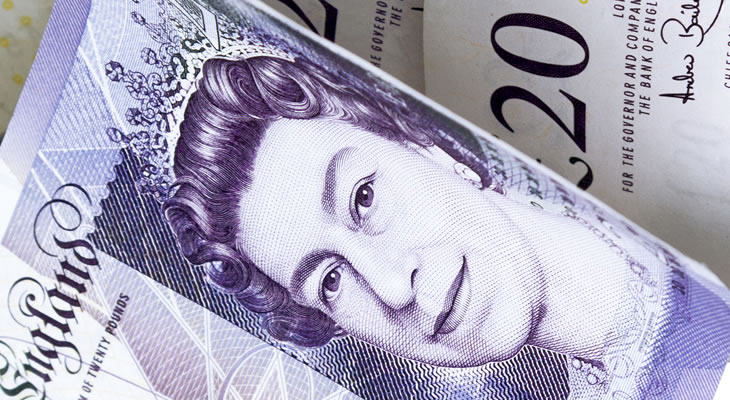Despite a lack of domestic reasons to buy the Pound recently, the GBP AUD exchange rate has advanced due to risk-averse movement in markets.
The Pound to Australian Dollar exchange rate began last week trending at 1.6442. After hitting a weekly high of 1.6566 on Friday, the pair continued to trend above the level of 1.65.
Pound (GBP) Outlook Limited Until Next Week’s Data
The past week’s UK data has had no notable effect on Pound exchange rates, leaving the British currency to be mostly influenced by its rivals.
Britain’s industrial production report from June beat expectations and manufacturing production came in as expected.
However, construction output only came in at 0.9%, missing 1.9% forecasts, while June’s trade balance update was highly disappointing.
The trade deficit was forecast to lighten from £-3.07b to £-2.5b, but instead deepened from a revised £-2.52b to £-4.56b.
According to James Smith, economist from ING;
‘One possible explanation for this is that the impact of the weaker Pound has been less pronounced than it might have been 10 to 20 years ago. The increasingly interconnected nature of global supply chains means exchange rate fluctuations are less of a key determinant of competitiveness.’
Sterling’s outlook has been even lower since the Bank of England (BoE) took a dovish tone in its August policy decision.
The British currency is unlikely to see stronger demand until domestic factors improve, which could be prompted depending on the results of next week’s key UK ecostats.
Tuesday will see the publication of Britain’s July Consumer Price Index (CPI), with June wage growth on Wednesday and July retail sales results coming in on Thursday.
Markets will focus especially on inflation and wage growth. If these reports beat expectations, the Pound will see a jump in demand as speculation about potential Bank of England (BoE) hawkishness flares up again.
The BoE has taken a dovish stance because UK inflation has slowed and Britain’s economic outlook is uncertain. As a result, stronger than expected data would boost the long-term Pound outlook.
Australian Dollar (AUD) Investors Await Job Market Data
The primary reason for the Australian Dollar’s weakness over the past week has been risk-aversion, which looks like it’ll persist until markets close for the weekend.
This has helped the GBP AUD exchange rate to advance despite Pound weakness.
Geopolitical tensions have jumped again amid increasingly heated rhetoric between the US and North Korea.
On Thursday evening, US President Donald Trump issued yet another warning to NK, keeping markets on edge and keeping pressure on the risk-correlated Australian Dollar.
On top of risk-aversion, the ‘Aussie’ has been weak due to a lack of notable supportive domestic news in recent weeks, causing the recently strong currency to be sold from its highs.
Australia’s latest ecostats have been mixed. Westpac’s consumer confidence survey saw confidence slip in August, while June’s home loans results fell short of expectations.
The Australian Dollar could find some long-term support if next week’s Australian job market report impresses investors though.
Next week will also see the publication of the Reserve Bank of Australia’s (RBA) latest meeting minutes.
While the RBA took a cautious stance in its most recent meeting, if the minutes report is more optimistic than expected the Australian Dollar could strengthen.
However, if geopolitical tensions continue to hit headlines and keep markets averse to risk, Australian Dollar demand will be limited.
GBP AUD Interbank Rate
At the time of writing this article, the GBP AUD exchange rate trended in the region of 1.6507. The Australian Dollar to Pound exchange rate traded at around 0.6055.


Comments are closed.